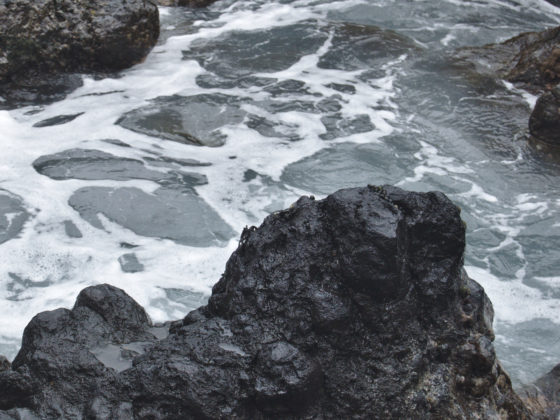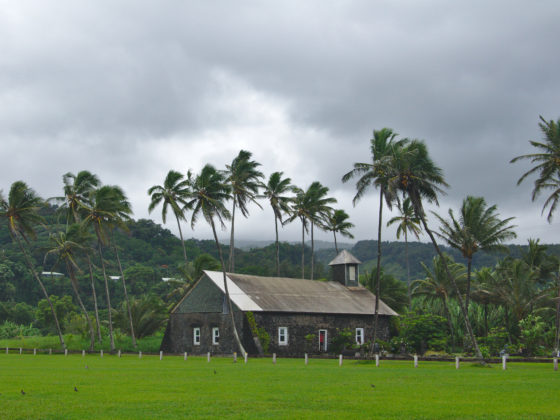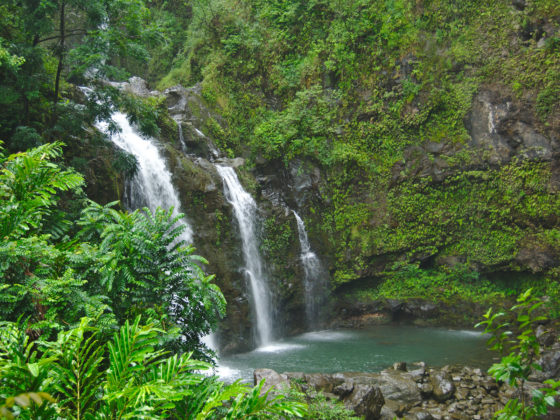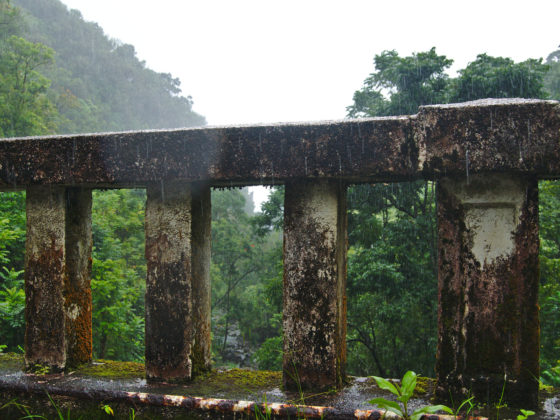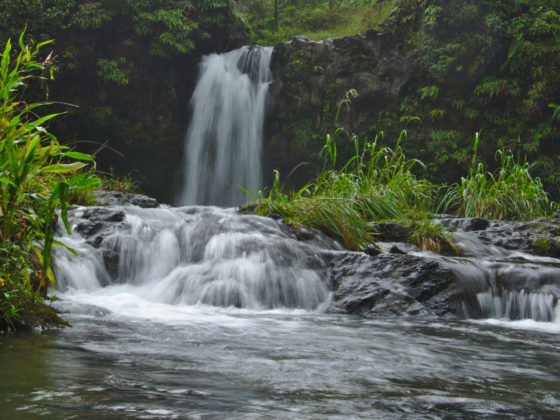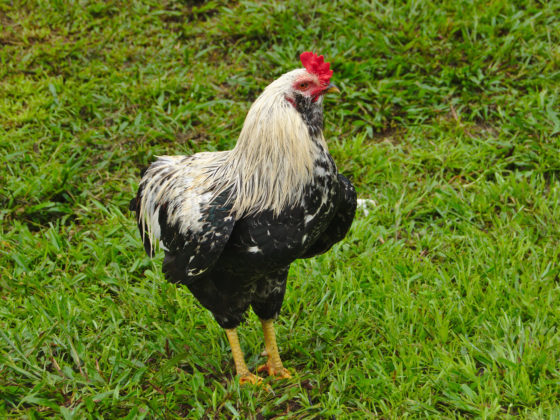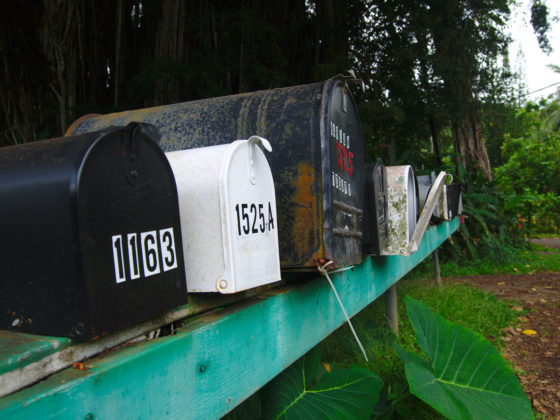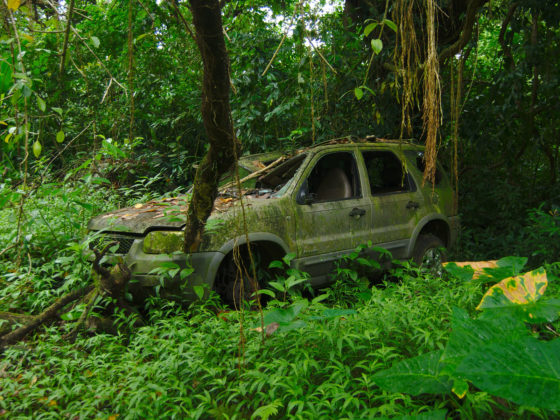Today we went to Hana, which meant we had an opportunity to take the Road to Hana a second time. We’d intentionally covered only about half of it yesterday, leaving us time to enjoy the second half today. Once again, it was breathtaking and amazing.
Our first stop was Honomanu Beach, which is one of three “black sand” beaches along the northeast corner of Maui. These beaches are relatively rare, and also short-lived (meaning only a few hundred years) because the black lava rock that’s ground down by the force of water eventually disperses into the ocean. It’s really cool to see so many smoothed pieces of pumice, and walk in sand that’s jet-black.
From there we stopped at Ke’anae a second time– we didn’t spend enough time there yesterday, and there’s a famous little shop that offers legendary banana bread. Sadly, they’d sold their last loaf of bread just before we arrived. But the surf was still pounding the rocks, and I managed to capture some fascinating shots of splashing water frozen in flight.
Along the shoreline, there are little jet-black crabs that scuttle along the rocks. The waves pound on them, but somehow they manage to hold onto the rocks. It’s pretty cool. One of the crabs is visible just left of the top edge of this rock:
Nearby is a century-old church that survived a tsunami in the mid-Twentieth Century. It’s beautiful in this island setting, surrounded by waving palms and the incredible shades of green that pervade this area of the island.
We continued our journey along the road, stopping at a few notable waterfalls. Here’s a triple set that I really liked:
Right around that time, the mist that we’d been enjoying turned into a full rain storm. This is the part of Maui that averages more than an inch of rain every day, and apparently today was just another average day. (Humorous side note: later in Hana, I saw the seven-day weather forecast; every day said “showers likely”.) Everything is basically damp all the time, which means things like bridges are covered in moss, and guardrails are rusty.
Pua’a Ka’a Falls are gorgeous, even in the rain.
Near the falls was this rooster. He just sort of stood around, walking slowly. It’s funny to see the wild chickens and roosters that seem to pervade the island. (They were on O’ahu as well.)
Our next stop was the tiny village of Nahiku, which is apparently known as the “most beautiful place in the world to live”. It’s basically about a dozen homes– most looking pretty worn-down– but indeed, it’s a stunning place. The road to get to the village is, like the Road to Hana itself, a series of crazy switchbacks along one-lane roads. It’s funny to see a bunch of mailboxes at the end of the road.
There’s also a school bus stop, with a note that instructs visitors not to park there because it’s the only place a bus can turn around to head back up the road.
A familiar site in Maui is the abandoned car. I’m guessing that it’s prohibitively expensive to take a junked car and ship it somewhere for disposal, and it’s also expensive to get a tow truck up in the mountain roads to haul the car away. So people apparently just drive them off to the side of the road and walk away. It probably doesn’t take long for the jungle to completely overgrow the vehicle.
As we walked through Nahiku toward the ocean, we found what can only be described as the most amazing swimming hole in the world. It’s a little pool of deep, crystal-clear water that’s fed by a small waterfall. One can jump from a twenty-foot cliff into the water (I would have done it in a heartbeat if I hadn’t been fully clothed). We hung around there for a while, and Laralee commented that it was the best place we’d visited thus far. Here’s a shot that really doesn’t do it justice:
(Notice the rope swing at the top right of the picture, which is handy for leaping out into the middle of the pool.)
As the sun was setting, we arrived in Hana on the eastern shore of Maui. We hiked around a couple of beaches and celebrated another day in paradise.



